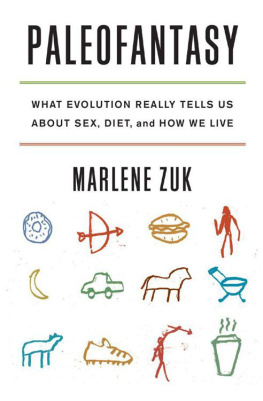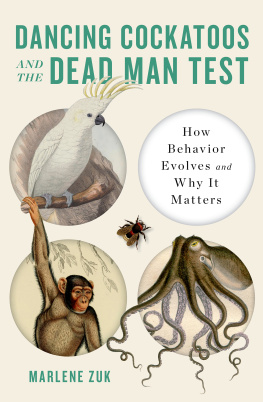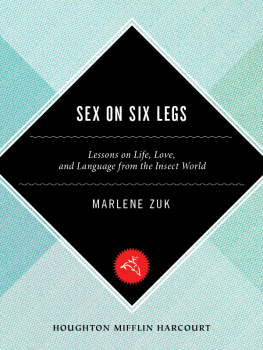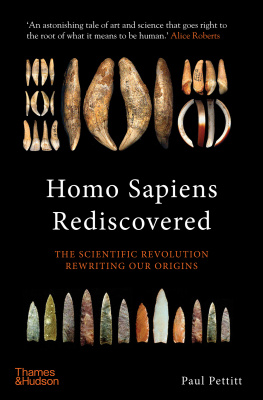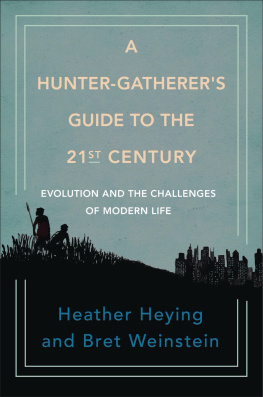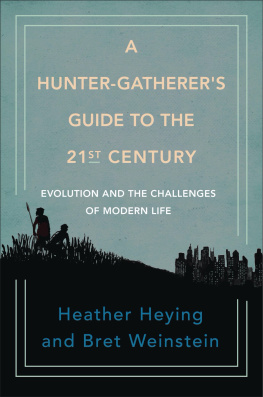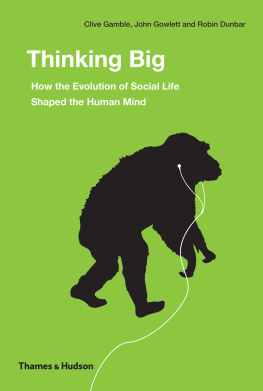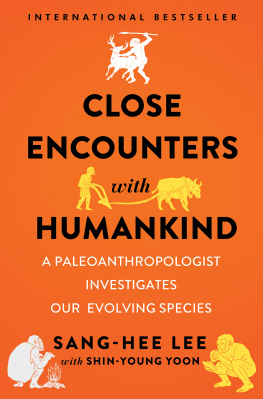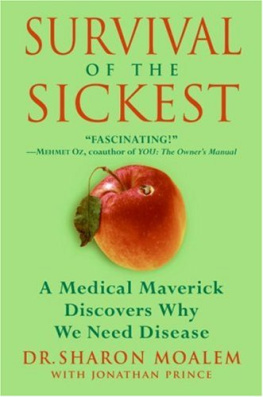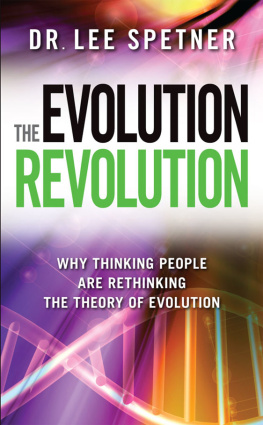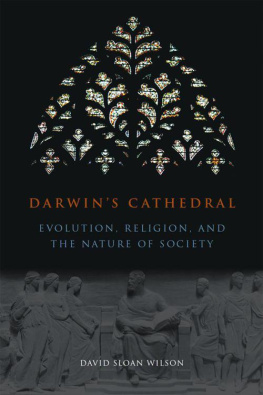Paleofantasy

WHAT EVOLUTION REALLY TELLS US
ABOUT SEX, DIET, AND
HOW WE LIVE
Marlene Zuk

Contents
The first thing you have to do to study 4,000-year-old DNA is take off your clothes. I am standing with Oddn sk Sverrisdttir in the air lock room next to the ancient-DNA laboratory at Uppsala University in Sweden,1 preparing to see how she and her colleagues examine the bones of human beings and the animals they domesticated thousands of years ago. These scientists are looking for signs of changes in the genes that allow us to consume dairy products past the age of weaning, when all other mammals lose the ability to digest lactose, the sugar present in milk. After that time, dairy products can cause stomach upsets. But in some groups of humans, particularly those from northern Europe and parts of Africa, lactasethe enzyme that breaks down lactoselingers throughout life, allowing them to take advantage of a previously unusable food source. Oddn and her PhD supervisor, Anders Gtherstrm, study how and when this development occurred, and how it is related to the domestication of cows for their meat and milk. They examine minute changes in genes obtained from radiocarbon-dated bones from archaeological sites around Europe.
The first step is to extract the DNA from the bones. But when examining genes from other humans, you must avoid contaminating the samples with your own genetic material. Suddenly I feel sullied by my own DNA and imagine it floating all around me, like infestive dust motes, needing to be contained as if it were the miasma of a terrible plague. Oddn, a tall, blonde Icelandic woman who looks like my image of a Valkyrie, at least if Valkyries are given to cigarette breaks and bouts of cheerful profanity, has brought a clean set of clothes for me to put on under the disposable space-suit-like outfit I need to wear in the lab. I have to remove everything except my underwear, including my jewelry. Gtherstrm says it is the only time he ever takes off his wedding ring. I don the clean outfit, followed by the white papery suit, a face mask that includes a transparent plastic visor over my eyes, latex gloves, and a pair of slip-on rubber shoes from a pile kept in the neverland between the lab and the outside world. Anything else that goes into the laba flash drive for the computer, saycannot go back in once it has gone out, to prevent secondary contamination of the facility. Finally, I put on a hairnet and tuck my hair underneath.
We enter the lab, where the first thing we do is stretch another pair of gloves over the ones we just put on. Oddn takes out a plastic bin of bone samples, each in its own zip-top bag. The bones themselves have been bleached and then irradiated with ultraviolet light to remove surface contamination. Before setting the bin on the counter, she wipes the surface with ethanol, followed by a weak bleach solution, and then with more ethanol. Apparently the saying that one cant be too careful is taken literally in this lab. We all have to be kind of OCD to do this work, says Oddn, smiling. Or at least I think she is smiling under her mask.
To obtain the DNA, the bones are drilled and the powder from the interior is processed so that the genetic sequences inside are amplifiedthat is, replicated to yield a larger amount of material for easier analysis. Some bones are more likely to be fruitful than others; we heft the samples, since Oddn says that the most promising ones are heavy for their size, and glossy. Most of the samples are about 4,000 years old, but one of them is around 16,000 years old. It has already been rendered into powder, and I look at it closely, but it doesnt seem any different from the others. One of the pieces is a flat section of skull, while others are sections of leg or arm bones, or a bit of pelvis. Oddn and I wonder briefly who all these people were, and what their lives were like. The details of their experiences, of course, are lost forever. But the signature of what they were able to eat and drink, and how their diet differed from that of theirourancestors, is forever recorded in their DNA.
Other than simple curiosity about our ancestors, why do we care whether an adult from 4,000 years ago could drink milk without getting a stomachache? The answer is that these samples are revolutionizing our ideas about the speed at which our evolution has occurred, and this knowledge, in turn, has made us question the idea that we are stuck with ancient genes, and ancient bodies, in a modern environment. We can use this ancient DNA to show that we are not shackled by it.
The speed of evolution and our cave dweller past
Because we often think about evolution over the great sweep of time, in terms of minuscule changes over millions of years when we went from fin to scaly paw to opposable-thumbed hand, it is easy to assume that evolution always requires eons. That assumption in turn makes us feel that humans, who have gone from savanna to asphalt in a mere few thousand years, must be caught out by the pace of modern life, when wed be much better suited to something more familiar in our history. Were fat and unfit, we have high blood pressure, and we suffer from ailments that we suspect our ancestors never worried about, like posttraumatic stress disorder and AIDS. Dr. Julie Holland, writing in Glamour magazine, counsels that if you feel less than human, constantly stressed and run-down, you need to remember that the way so many of us are living now goes against our nature. Biologically, we modern Homo sapiens are a lot like our cavewoman ancestors: Were animals. Primates, in fact. And we have many primal needs that get ignored. Thats why the prescription for good health may be as simple as asking, What would a cavewoman do?2
Along similar lines, here are some comments from readers of the New York Times health blog Well :
Our bodies evolved over hundreds of thousands of years, and theyre perfectly suited to the life we led for 99% of that time living in small hunting and gathering bands.3
We are (like it or not) warm-blooded vertebrate mammals, i.e., part of the animal kingdom, and only in a very recent eyeblink of time become [ sic ] relatively free of the evolutionary pressures that shaped this species for millennia.4
Probably goes all the way back to caveman dayswomen out gathering berries, sweeping up the place, generally always on the run. Cave Mr. Man out risking his neck, hunting a sabre tooth tiger or maybe a wooly mammoth, dragging the thing home, and then collapsing in a heap on the couch with a beer. I get itmakes sense.5
I am not suggesting that Glamour magazine or the readers of the New York Times have pinpointed the modern dilemma in its entirety. But its hard to escape the recurring conviction that somewhere, somehow, things have gone wrong. In a time with unprecedented ability to transform the environment, to make deserts bloom and turn intercontinental travel into the work of a few hours, we are suffering from diseases our ancestors of a few thousand years ago, much less our prehuman selves, never knew: diabetes, hypertension, rheumatoid arthritis. Recent data from the Centers for Disease Control and Prevention (CDC) suggest that for the first time in history, the members of the current generation will not live as long as their parents, probably because obesity and associated maladies are curtailing the promise of modern medicine.
Some of this nostalgia for a simpler past is just the same old amnesia that every generation has about the good old days actually being all that good. The ancient Romans fretted about the young and their callous disregard for the hard-won wisdom of their elders. Several sixteenth- and seventeenth-century writers and philosophers famously idealized the Noble Savage, a being who lived in harmony with nature and did not destroy his surroundings. Now we worry about our kids as digital natives, who grow up surrounded by electronics and cant settle their brains sufficiently to concentrate on walking the dog without simultaneously texting and listening to their iPods.
Next page
